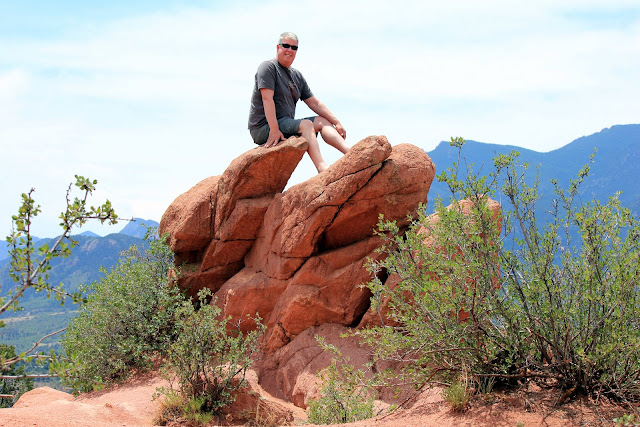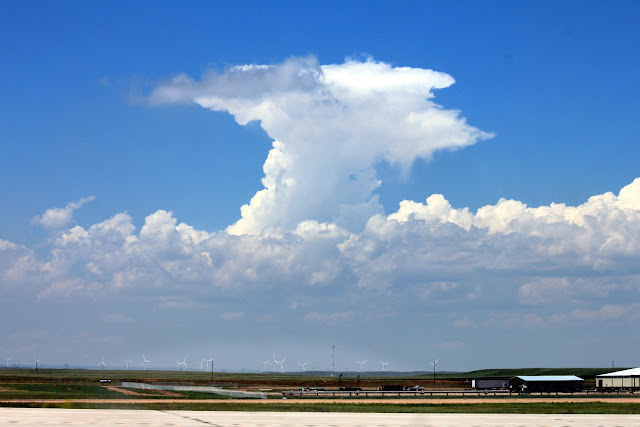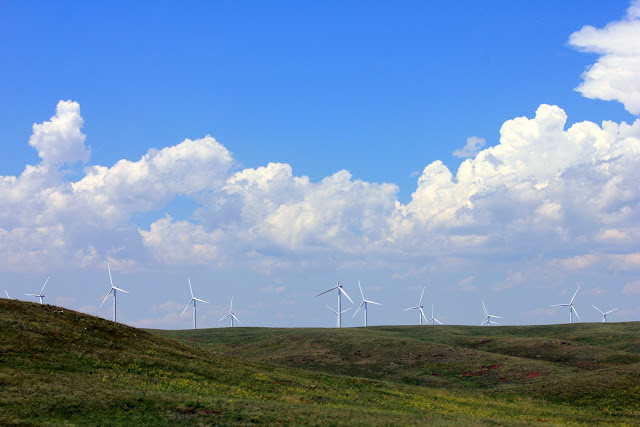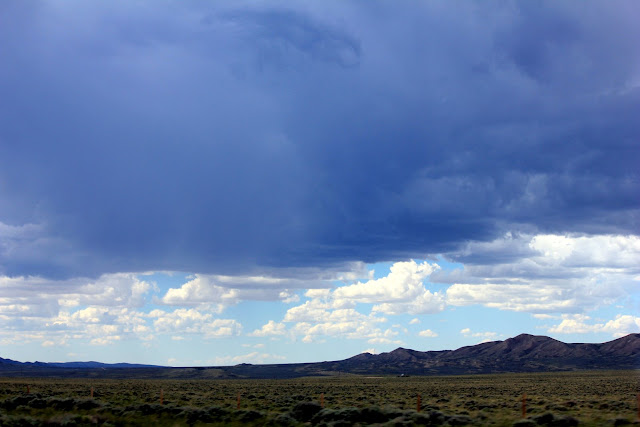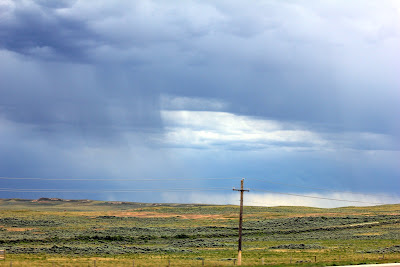
About a week ago there was a tiny blurb in our local paper announcing the 84th Annual Outdoors Writers Association Conference would have a "Free To The Public" seminar entitled "Becoming an Outdoors Communicator" to be held up in Snowbird, on Friday July 8th.
Well, I "communicate" via my blog about the outdoors a lot...so what the hey.
Sounds like an interesting seminar I could relate to.
I carefully clipped the blurb and put it in my pile of interesting articles, and then forgot to add the event to my day runner calender.

Friday July 8th rolled around and I was doing some heavy closet organization and floor washing (always a thrill, right?) when I somehow knocked the little scrap of paper off a counter.
Curses! It was already noon...I had forgotten all about the seminar.
But wait!
The seminar started a 3 pm, and was only a half hour away.
Just like that I abandoned my housewifery, shoveled a lunch down and headed to the shower to clean up,
The three hour session had an outdoor themed radio show creator, authors, magazine and newspaper editors, consultants, free lance writer and photographer.
Each explained the joys and challenges of earning a living in outdoors communication.
Most of them said they barely made a living but they LOVED what they did and where it has taken them.
I took copious notes and realized I didn't want to work that hard, even if it would mean doing something I loved.
My "outdoors" communication would probably remain at a hobby level, but I would certainly be open to the idea of blogging for a company, maybe.
Then the conference organizer announced that they had six passes FOR FREE to the entire conference, if anyone attending the seminar was interested.
Maybe I was...maybe I wasn't.
But it wouldn't hurt to ask about what other seminars were being held during the conference, right?
Turns out there was a seminar on Outdoors Macro photography.
And just like that...I signed up to become an official attendee of the 84th Annual Outdoors Writers Conference, held in Salt Lake City, Utah.
(Glad I didn't try to pull this "wait to the last minute to go" thing next year. It will be held in Fairbanks Alaska. A bit more careful planning would definitely be required.)

The macro class was to discuss the making of stronger macro photos.
It was to be taught by Sam Dean, an award winning photographer with the Roanoke Times, and was to entail 30 minutes classroom time, then 90 minutes of field work.
I was to bring my camera, tripod and my best macro lens.

There was maybe 15 people in the class.
Mr. Dean had experienced the sudden loss of his mother-in-law, so another member of OWAA step in to pitch hit.
Professional photographer Jim Foster of Salmon Idaho entertained us with his clever quips, and give us a brief intro to Macro:
Use a tripod (I have real problems with tripods personally; they just take too much time to set up).
Learn to use your camera's manual setting (but..but...I paid good money for all those automatic features!)
Be aware of depth of field (which means that in macro work only some of the picture will be in focus).
Light..there was something about light too...I'd have to go back and check my notes on that.

Then we headed outside to see what we could find photography to try hands at macro skills.
Oh, I just remembered: The definition of a macro shot is one where the picture of the thing is larger than the thing is in real life.
I just thought it was really up close picture of something really tiny, so it would look big.
He showed a picture of a elephant that he took, a tight close up, and that also would be considered a macro.
Huh. Good to know, right?

So for the record, my little four eyed spider friend in real life was about the size of an apple seed.
And you can bet your bippie that I am darn proud of getting the shot in such good focus that the eye highlights are clear...without using a tripod.
(I was sitting on the ground, bracing my elbows on my knees and shooting into the clump of grass about the size of small cantaloupe).

The most important detail that learned came about when Jim noticed one of the other two women in the class swapping out her camera lens. He asked her if she had turned off her camera first; she hadn't. He advised her to ALWAYS turn off her camera before swapping lens as the camera being turn on has a magnetic/static effect that pulls dust inside the camera.
I knew that...and had forgotten about that fact, and sadly have been swapping lens in the field for a couple of months now.
So for that bit of advice I am truly thankful.

I have read a book on outdoor macro photography and several articles. In the end, the final word on doing good macro work is a steady camera and lots of practice.

Jim did comment at length about the biggest challenge to macro photographers: Wind.
I was glad to hear I am not the only one that has mad magic powers to make any flower begin to wave about wildly in the breeze the moment I decide to photograph it.
Jim said his quick cheap fix for that problem is a metal skewer stuck into the ground and a bit of Velcro wrap that goes around the flower stem and the skewer to hold the flower steady.

Someone else suggested the idea of photographing rocks instead of flowers on windy days...

Sunday morning there will be a second session of the class in which our photos will undergo critique.
I can't wait...I have questions about why certain photographic effect happened in macro mode.
After today's session broke up I walked up to a patio area where there were flowers growing in containers.
My tripod actually was used for these next flower shots.
I have come to the conclusion that I really hate my tripod, not only because it takes time to set it up, but also because the legs have only three adjustment heights.
Naturally none of the three worked for what I was doing.

I think what I really need is either to take a class entitled "Tripods for Dummies" or buy a more expensive tripod.

I call this shot: "Two Hens Kissing Bearded Man".
After all the years I have have grown lobelias, I had never noticed this pattern within the flower before.

Cool, huh!

Then after I had gotten all packed up and was walking to my car, I spotted what everyone else had apparently been photographing while I was taking pictures of geraniums and lobelias.
This marmot had been busily mowing the lawn, eating one blade of grass at a time.

He was so funny; he would lay flat on the ground and nosed through the grass chewing away, biting another mouthful, then chewing some more, rather rapidly, and then about every minute or so he would look up, usually with a few grass blades still dangling from his mouth.

I was able to set my camera atop a pole to get a good steady shot; after I was done another woman came on the grass and used a very impressive tripod to take a series of shots of the marmot in another location.
Bernie said he hears that the Snowbird marmots just hang around the resort all the time now.

He was about 30 feet away from me; I used a telephoto lens set on infinity, and then cropped the picture down to get the "macro" shot of his face.

The drive home: Yes, there really was skiing at Snowbird on the Fourth of July.

The Snowbird area wildflowers are going to be late blooming this year for sure with all this snow still on the ground up there.
Sure is pretty though.
I'll be going back up there on Sunday for the critique session, and to take a class on Shooting on the Go: Better Action Photos.
Let me tell you; I definitely will be getting my money's worth out of this conference!
(And by the way, that "log" in the first picture was in real life about a quarter inch wide.)
Sure is pretty though.
I'll be going back up there on Sunday for the critique session, and to take a class on Shooting on the Go: Better Action Photos.
Let me tell you; I definitely will be getting my money's worth out of this conference!
(And by the way, that "log" in the first picture was in real life about a quarter inch wide.)














